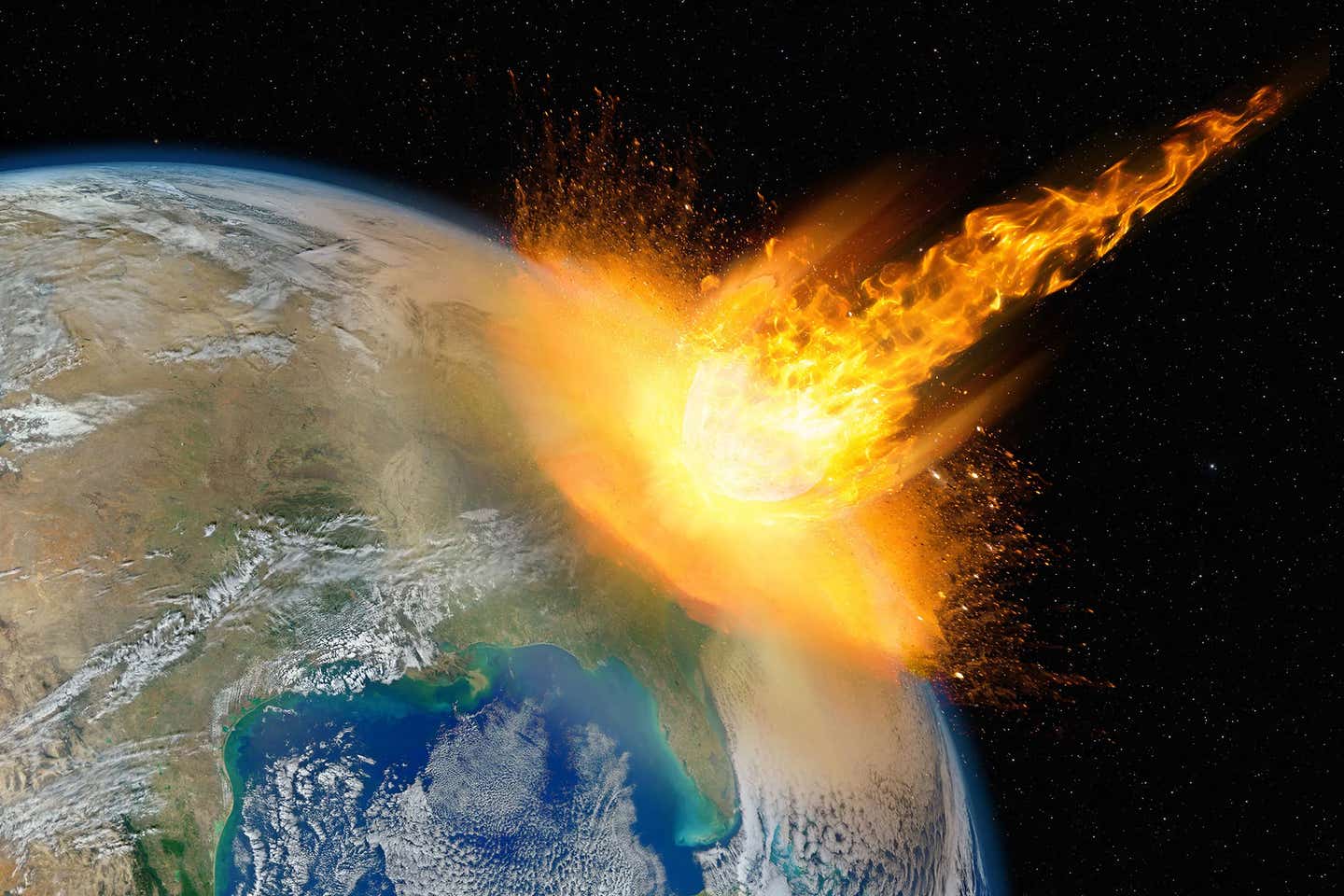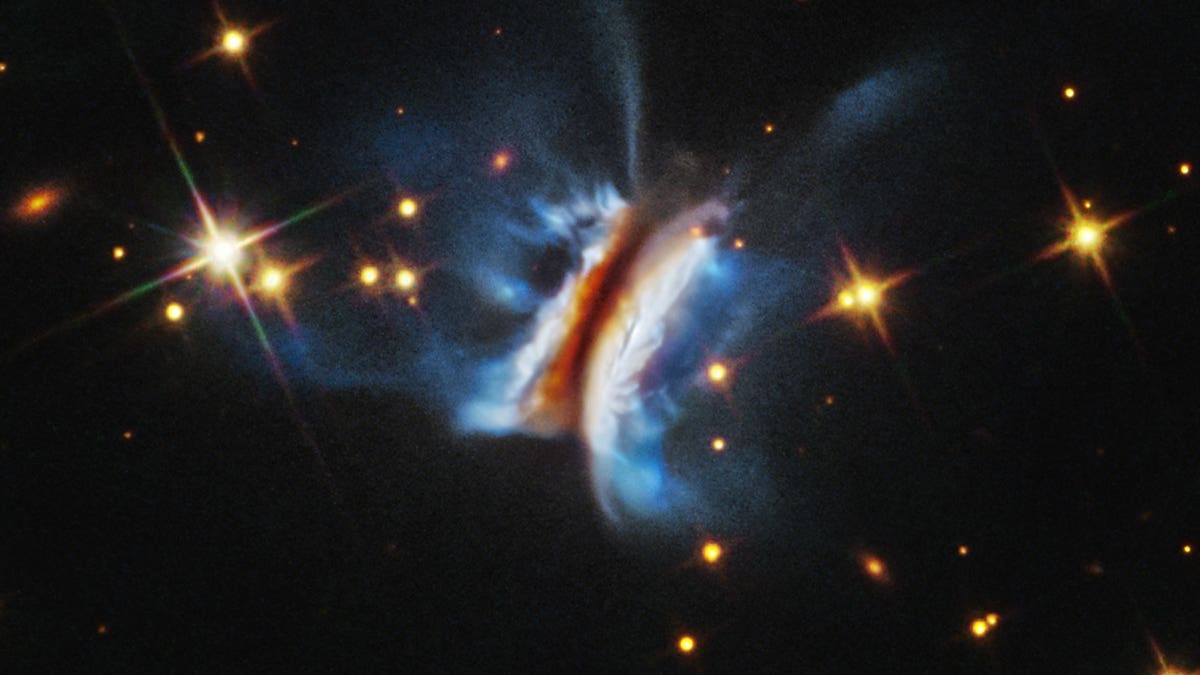What if a meteorite the size of four Mount Everests hit Earth?
A 3.26-billion-year-old meteorite impact reveals how cataclysmic events not only destroyed but also sparked early microbial life on Earth.

A massive meteorite impact shaped early life on Earth. (CREDIT: IStock Images)
Billions of years ago, when life as we know it was still in its earliest stages, Earth endured a period of intense meteorite bombardment. Among the impacts that reshaped the planet, one particularly colossal space rock struck about 3.26 billion years ago.
Known as the S2 impact, its remnants are still preserved in the Barberton Greenstone Belt of South Africa, offering scientists a unique window into Earth’s distant past.
Dr. Nadja Drabon, a geologist at Harvard University, is at the forefront of studying this ancient meteorite impact. Her research explores what Earth was like in its early eons—an era when single-celled bacteria and archaea were the only forms of life.
In this ancient world, meteorite impacts were frequent, shaping the landscape and potentially influencing the emergence and evolution of life. Through her work, Drabon hopes to answer fundamental questions about how life began to thrive on a planet scarred by violent celestial collisions.
In a recent study published in Proceedings of the National Academy of Sciences, Drabon and her team uncovered new insights into the S2 impact. By examining rock samples from the Barberton Greenstone Belt, they’ve been able to reconstruct the events that unfolded after the meteorite, which was roughly the size of four Mount Everests, collided with Earth. This impact, 200 times larger than the one that wiped out the dinosaurs, triggered an immense tsunami that altered the planet's oceans and atmosphere.
Related Stories
Drabon described the event as catastrophic: “Picture yourself standing off the coast of Cape Cod, in a shelf of shallow water. It’s a low-energy environment, without strong currents. Then all of a sudden, you have a giant tsunami, sweeping by and ripping up the sea floor.”
The immense waves churned up the ocean, mixing deep, iron-rich waters with the shallower, nutrient-poor waters, and dragged debris from land into the sea. The heat generated by the impact boiled off the top layer of the ocean and sent a thick cloud of dust into the atmosphere, blocking out sunlight and halting any photosynthesis that might have been taking place at the time.
While such an impact may seem like a death sentence for life, Drabon’s study suggests a more nuanced outcome. Although the tsunami and atmospheric effects likely wiped out many organisms, particularly phototrophic microbes that depended on sunlight, some forms of life adapted quickly.
The study found evidence of a sharp increase in iron-metabolizing bacteria immediately after the impact. According to Drabon, this shift is a crucial piece of the puzzle in understanding how early life on Earth evolved.
Meteorite impacts, despite their destructive power, may have also provided the conditions for life to flourish. The S2 impact, for instance, delivered phosphorus—a critical element for life—to the planet, both through the meteorite itself and through increased weathering of the land after the event.
This influx of nutrients likely sparked microbial blooms, particularly of iron-cycling bacteria. “We think of impact events as being disastrous for life,” Drabon explained. “But what this study is highlighting is that these impacts would have had benefits to life, especially early on … these impacts might have actually allowed life to flourish.”
The Barberton Greenstone Belt, where Drabon and her team conduct their research, is a geological treasure trove that preserves evidence of at least eight major impact events, including the S2. These impacts left a lasting imprint on the sedimentary rock, which holds clues to the environmental and biological changes that followed each event.
By analyzing the sedimentology, geochemistry, and carbon isotope compositions of these rocks, the researchers can trace the effects of these cataclysms on the early Earth.
The work is painstaking, requiring geologists to collect and study rock samples mere centimeters apart. But the effort is worth it, as these thin layers of sediment hold chemical signatures that reveal the planet’s history. The analysis of the S2 impact, for example, has shown how iron-rich waters from the deep ocean were mixed with shallower waters, creating conditions that favored iron-metabolizing bacteria. In addition to the influx of iron, phosphorus from the impact contributed to the growth of microbial populations.
These microbial blooms likely played a significant role in the recovery of life after the impact. Although the immediate aftermath of the S2 event was devastating, life rebounded quickly. The bacteria that thrived in these conditions are a testament to the resilience of life on Earth, even in the face of seemingly insurmountable challenges.
Drabon’s research highlights how large meteorite impacts, though often associated with mass extinction events, could have also provided opportunities for life to evolve and diversify. This idea challenges the traditional view of impact events as purely destructive forces. Instead, they may have been crucial in shaping the early biosphere and setting the stage for the development of more complex life forms.
The study of the S2 impact and other similar events is ongoing. Drabon and her team continue to explore the Barberton Greenstone Belt, hoping to uncover even more details about how these ancient meteorite impacts influenced the early Earth. Their work is part of a broader effort to understand the complex interplay between geological processes and the evolution of life on our planet.
Through their research, scientists like Drabon are piecing together the story of how life emerged on Earth—a story that began billions of years ago, when meteorites like the S2 brought both destruction and new possibilities for life to thrive.
Note: Materials provided above by The Brighter Side of News. Content may be edited for style and length.
Like these kind of feel good stories? Get The Brighter Side of News' newsletter.



